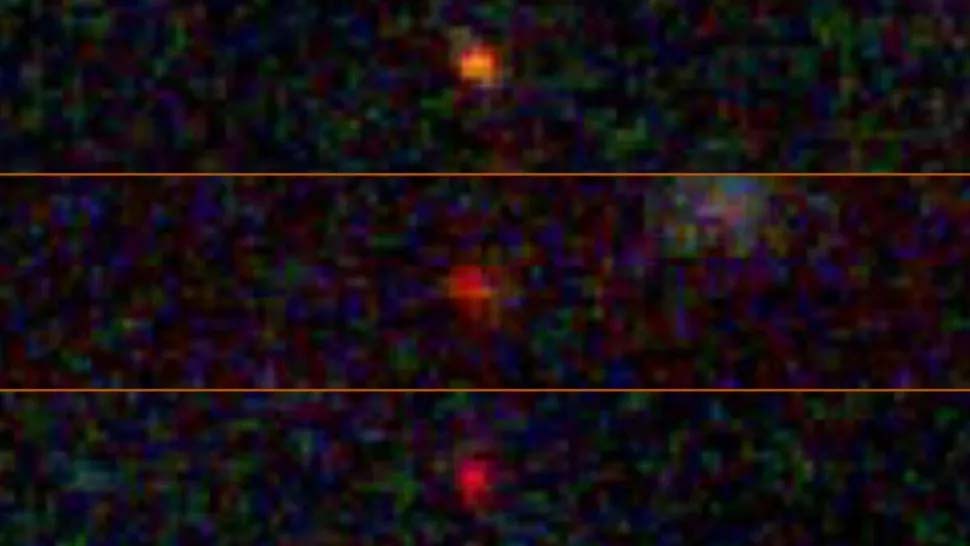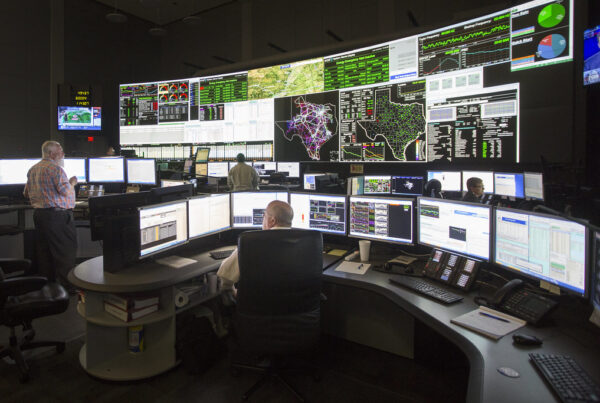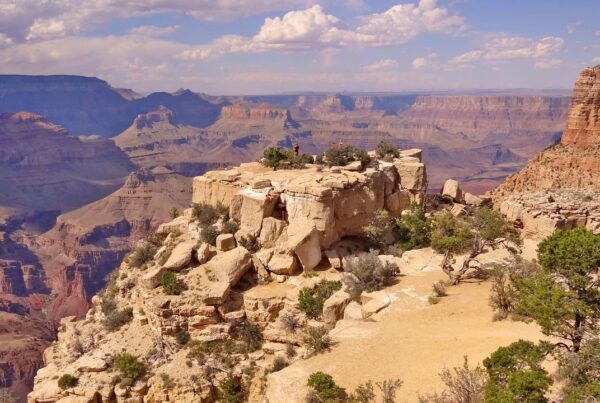Does the universe contain dark stars – objects that are bigger and brighter than our own sun, and powered by particles of dark matter? A team of astrophysicists who have analyzed data from the James Webb Space Telescope says these mysterious celestial giants could exist.
Katherine Freese, director of the Texas Center for Cosmology and Astroparticle Physics at the University of Texas at Austin, told the Texas Standard that it’s difficult to determine whether the objects in question are early galaxies or true dark stars. Listen to the interview above or read the transcript below.
This transcript has been edited lightly for clarity:
Texas Standard: What’s a dark star?
Kaherine Freese: A dark star? Yes. What a strange beast that we have proposed. These are stars that are made of ordinary matter, but they would be powered by dark matter particles. So they would have been the very first stars to form in the history of the universe when the universe was about 200 million years old.
And they form at the centers of proto galaxies where there’s a lot of dark matter. And the question we asked is, what does a dark matter do? And we realized that it could change the nature of these first stars dramatically.
So the first stars are made of hydrogen and helium from the Big Bang. That’s it. There’s nothing else yet in the universe. And as they start, as you have these collapsing clouds towards making stars, the dark matter particles – well, we think dark matter is made of particles – these things start annihilating among themselves and they dump all of their energy into these collapsing clouds of hydrogen.
So then the annihilation products get stuck inside these collapsing clouds. And so you’re heating up hydrogen and you’re turning it into a new kind of star: a dark star.
How much debate is there about the existence of dark stars as you’re describing them?
I think one of the big questions is what is the universe made of in a bigger picture? And in that sense, ordinary stuff – ordinary matter that makes up our bodies, our walls, the air, stars and planets – all of that is only 5% of the content of the universe.
And the rest, the 95%, is all dark matter and dark energy. We don’t even know what the dark matter particles are. But they have to exist because we see dark matter pulling on things everywhere.
If the dark matter is made of the particular type of particles that annihilate among themselves, that would deposit heat in a collapsing cloud, then dark stars, they should exist. But we don’t know that yet because we don’t know what the dark matter is. So the best thing we can do is make predictions for what these stars look like and go test those predictions.
» MORE: First images from NASA’s Webb telescope show ‘a metropolis of galaxies’
What needs to happen to confirm the theory?
Well, the dark stars that we predict are very, very strange looking. So in size and radius, they’re 10 times the distance between the Earth and the sun; that’s the radius of one of these things. So they’re big and puffy. They’re very cool. So their surface temperatures are the same. They would look like the sun as far as the temperature goes, but they can grow to be really, really big and bright, like a million times as massive as the sun, a billion times as bright as the sun.
So if you see the strange combination of having a relatively cool star, but one that is so giant and bright, that’s one of the things that we’re looking for. And in the James Webb Space Telescope, we made very specific predictions for what to look for. One dark star is as bright as an entire early galaxy’s little stars would be. We’re waiting for further confirmation in the James Webb Space Telescope of more dark star candidates.
One of the things you always look for in the star is a spectrum. So how much light is coming out at different wavelengths. It’s called the Blackbody spectrum. So there’s a peak at one particular wavelength and it falls off in a very well-defined way on either side of the peak. We made those predictions actually in 2010 for what they should look like.
So far, we have spectra for four objects that we checked out, and three of them actually are consistent for the objects of early universe objects that the JWST sees. Three of them are consistent with being either a dark star or an early galaxy; we can’t tell the difference yet. But down the road, when they find more objects, some of them will be highly magnified. They’ll be brighter because they’ll be lensed by something in between us and the distant objects, so that highly magnifies what we see.
If you find more objects – what were you going for there?
If the future objects contain stuff beyond hydrogen and helium – like carbon, nitrogen, other elements – that’s a galaxy. But on the other hand, if it’s only hydrogen and helium, and we make specific predictions for some type of helium line, that if you saw that line, then that would be a dark star.
So with better information about the spectra – how much light there is coming in different frequencies from it – really, we need brighter objects. We need magnified objects. But those will be coming.
Was it the Webb telescope data that made this breakthrough possible?
The Webb Space Telescope is the first one that’s able to look far enough back in time to look for dark stars. So this is what we’ve been waiting for.













